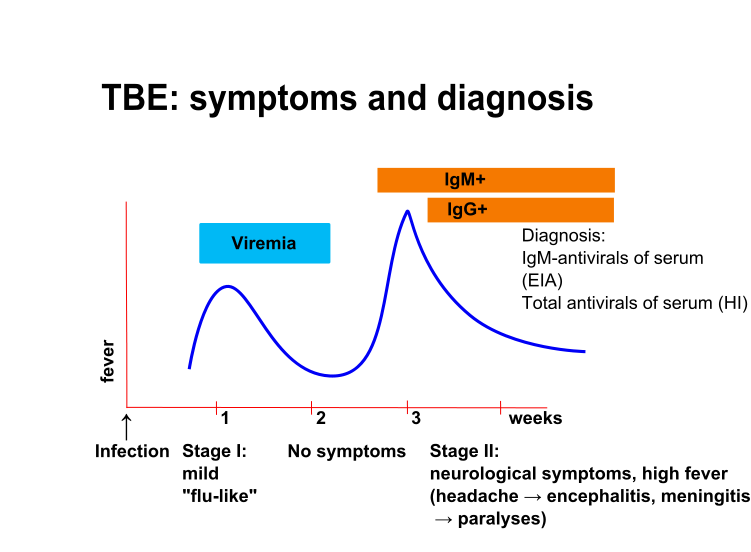Tick-borne encephalitis history and symptoms
|
Tick-borne encephalitis Microchapters |
|
Diagnosis |
|---|
|
Treatment |
|
Case Studies |
|
Tick-borne encephalitis history and symptoms On the Web |
|
American Roentgen Ray Society Images of Tick-borne encephalitis history and symptoms |
|
Risk calculators and risk factors for Tick-borne encephalitis history and symptoms |
Editor-In-Chief: C. Michael Gibson, M.S., M.D. [1] Associate Editor(s)-in-Chief: Ilan Dock, B.S.
Overview
Tick-borne encephalitis infections will often present themselves with biphasic clinical manifestations. Following an incubation period of 7 to 14 days, a patient will experience early onset, non-specific flu like symptoms. A patient will then experience a remission period of lessened symptoms or will appear to be completely asymptomatic.[1] A second phase will occur in which patients will experience an infection of the central nervous system resulting in a number of neurological, clinical manifestations.
History and Symptoms
- Symptoms associated with tick-borne encephalitis will appear after an average incubation period of 7 to 14 days.
- The infection usually occurs as a biphasic disease, with early onset symptoms, a period lessened symptoms or asymptomatic(remission), and finally a second phase within 20-30% of patients.[1]
Early Onset
Remission Period
- Lessened non-specific flu like symptoms
- Completely asymptomatic
Second Phase
- Infection of the central nervous system
- Symptoms associated with meningitis including: fever, headache, and a stiff neck
- Encephalitis
- Drowsiness
- Confusion
- Sensory disturbances
- Motor abnormalities such as paralysis
- Meningoencephalitis[2]

- Although the above list relates to potential symptoms associated with a full course infection, many infected individuals will remain asymptomatic without any signs of symptoms.
- In addition to the the aforementioned list, symptoms may vary in severity, based on the subtype responsible for infection as well as mode of transmission.
References
- ↑ 1.0 1.1 Signs and Symptoms Centers for Disease Control and Prevention. http://www.cdc.gov/vhf/tbe/symptoms/index.html Accessed February 9, 2016
- ↑ 2.0 2.1 Tick-borne Encephalitis Virus: A General Overview. http://cdn.intechopen.com/pdfs-wm/20866.pdf. Accessed February 4, 2016.